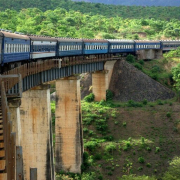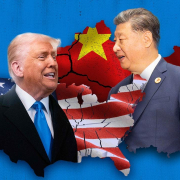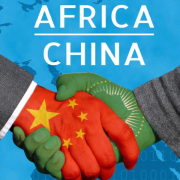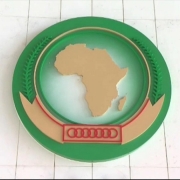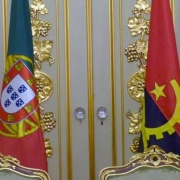China Invested 1.4 Billion USD in the Tanzania–Zambia Railway (TAZARA)
What is the impact on the Lobito Corridor?
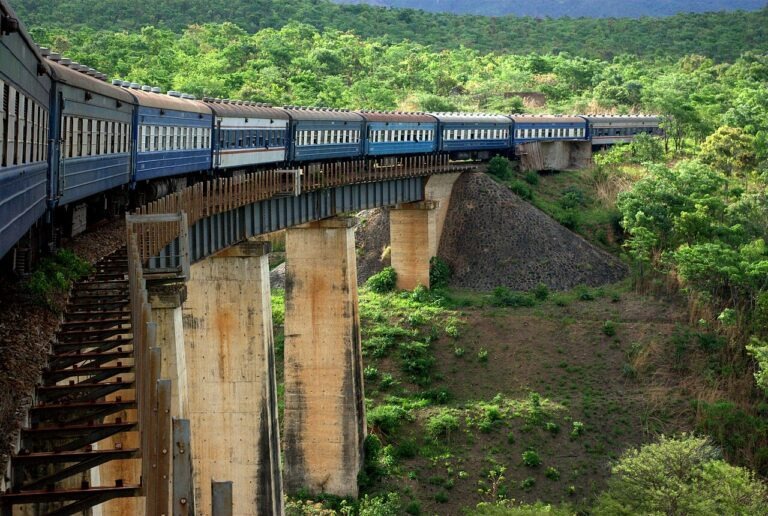
João Shang
Associate Researcher at CEDESA (China–Africa Area)
Visiting Professor at Beijing University of International Business and Economics
Across the vast plateau of southern Africa stretches a steel artery symbolizing friendship and cooperation between China and Africa—the Tanzania–Zambia Railway (TAZARA). Spanning approximately 1,860 km, the railway connects the port of Dar es Salaam on the Indian Ocean to the city of Kapiri Mposhi in central Zambia, crossing Tanzania’s highlands and linking landlocked, mineral-rich countries to the outside world.
TAZARA is not only an infrastructure project but also a historic symbol of Africa’s economic independence and regional integration. For resource-rich countries such as Zambia, Tanzania, and the Democratic Republic of the Congo (DRC), the railway plays a crucial role in mineral transport, trade promotion, and regional cooperation.
Zambia: The Lifeline of the Copper Economy
Zambia is one of the world’s top copper producers, and copper exports account for about 70% of its foreign exchange earnings. With TAZARA, Zambia gained an independent railway route to the Indian Ocean, reducing reliance on routes controlled by former colonial powers.
Through this railway, copper produced in the Copperbelt region is transported to the port of Dar es Salaam for export to Asia and Europe. At its peak, TAZARA handled more than one million tons of copper and other goods annually. This transport network significantly reduced logistics costs and ensured Zambia’s economic stability.
The railway also promoted integration between mining areas and industrial cities, fostering the growth of towns such as Ndola and Kapiri Mposhi and creating thousands of direct and indirect jobs.
Tanzania: A Link Between the Port and the Economic Corridor
For Tanzania, TAZARA serves not merely as a national railway but as an international trade corridor. The port of Dar es Salaam has become one of East Africa’s main mineral export hubs thanks to this line.
The growing cargo volume—including minerals, fuels, fertilizers, and industrial products—has boosted the port’s growth and driven economic development in cities along the route, such as Mbeya and Mpika, forming a new internal economic axis. TAZARA has also strengthened Tanzania’s geostrategic position within the Southern African Development Community (SADC), consolidating its role as a regional hub.
Congo-Kinshasa: An Alternative Route to the Lobito Corridor
Katanga, in southeastern DRC, is extremely rich in copper, cobalt, tantalum, and lithium. Historically, exports of these minerals were hindered by poor infrastructure. With stronger regional cooperation, many Congolese mining companies began using TAZARA, transporting their products via Lubumbashi through Zambia and then by rail to Dar es Salaam.
Although this route is slightly longer than the Lobito Corridor in Angola, it offers greater stability, safety, and reliability, especially during political instability. With rising global demand for strategic minerals—particularly cobalt and copper—TAZARA has become essential for exporting DRC’s mineral wealth and securing a steady flow of foreign exchange.
TAZARA has enhanced logistical integration between inland and coastal countries of southern Africa. Beyond linking Zambia and Tanzania, it connects through branch lines and roads with the DRC, Malawi, Rwanda, and Burundi, providing direct access to the sea. This connectivity system has greatly increased intra-African trade, supporting the goals of the African Continental Free Trade Area (AfCFTA).
Reducing Costs and Increasing Efficiency
Compared with road transport, rail is cheaper, safer, and less polluting. For mining companies, rail use can reduce logistics costs by 30% to 40%. The railway also offers greater reliability and lower risk of cargo damage.
Before the railway, many of the regions it crosses were economically isolated. TAZARA created new opportunities for employment, trade, and services, fostering progress in education, healthcare, and social infrastructure. The project became a hallmark of Sino–African cooperation aimed at improving local livelihoods.
China Invested 1.4 Billion USD to Modernize the TAZARA Railway
Despite its historic significance, TAZARA faces major challenges: aging infrastructure, outdated locomotives, and reduced capacity. Yet it remains one of China’s most comprehensive overseas cooperation projects.
Years of wear, obsolete equipment, and management issues reduced operational efficiency. In the early 21st century, China, Tanzania, and Zambia began joint inspections and negotiations, reaching a preliminary agreement on TAZARA’s revitalization.
With rising global commodity prices, especially copper, both Tanzania and Zambia became more determined to boost mineral exports. They expressed a strong interest in modernizing and expanding the railway to meet growing transport demand.
During the Beijing Summit of the Forum on China–Africa Cooperation in September 2024, the three heads of state—China, Tanzania, and Zambia—signed a Memorandum of Understanding on the TAZARA Revitalization Project.
Early this year, the TAZARA Authority signed a concession agreement with a Chinese company under which China will invest 1.4 billion USD to modernize the railway.
Why Modernize TAZARA?
After modernization—reinforced tracks, upgraded signaling, renewed locomotives, and digital management systems—railway efficiency and safety improved substantially. Average train speeds rose from 30–40 km/h to 60–80 km/h, while cargo turnaround times fell by about 40%. Annual capacity increased from under 1 million tons to between 3 and 5 million tons, with potential for further growth.
This allows Zambia’s copper and DRC’s cobalt to reach international markets more efficiently. The logistics system between inland regions and the port became faster and more reliable. Rail transport costs dropped by 30%–40% compared to road, and energy consumption nearly halved.
For example, copper transport from the Copperbelt to Dar es Salaam, which previously took 10–14 days, now takes 5–7 days. For mining companies, this means lower costs, better predictability, and greater competitiveness in the global metals market.
Dar es Salaam’s port also benefits from increased exports, generating higher revenues from port fees, storage, and currency exchange—a win-win for all involved countries.
Modernization transformed TAZARA into a transnational economic corridor based on the “resources–transport–processing–export” model. The port of Dar es Salaam was expanded and upgraded, becoming an integrated mineral export and container transport hub.
The modernization process created over 30,000 direct and indirect jobs in construction, maintenance, logistics, and management. Cities like Mpika, Mbeya, and Kapiri Mposhi grew rapidly, with more business activity and real estate development.
New passenger trains are safer and more comfortable, boosting tourism and mobility. For rural communities, the railway provides vital access to schools, hospitals, and markets, greatly improving living conditions.
Modernization strengthened economic and institutional integration among Tanzania, Zambia, and the DRC. The railway now serves as both a physical and political link fostering customs cooperation, border facilitation, and regional trade—aligned with the African Union’s Agenda 2063 for a connected, industrialized, and self-reliant continent.
The new TAZARA also supports the AfCFTA by improving the mobility of goods and people across Africa’s east–south axis. It stands as a key landmark of China’s Belt and Road Initiative (BRI) in Africa.
Future Prospects and Strategic Value
In the context of China’s Belt and Road Initiative, TAZARA takes on new strategic relevance. In the future, it should consolidate itself not only as a mineral transport route, but also as an integrated economic corridor:
Adding value to minerals – creation of industrial zones for smelting and processing copper and cobalt; Formation of a regional economic corridor – integration between rail, road, port, and energy infrastructure; Green and sustainable transport – rail transport emits less carbon and promotes ecological development; Symbol of modern Sino-African cooperation – the revitalization of TAZARA represents a new model of partnership based on mutual benefit and joint development.
The Tanzania–Zambia Railway spans borders and generations. It embodies China–Africa friendship while powering southern Africa’s economy. From Zambia’s Copperbelt to the DRC’s cobalt mines and the port of Dar es Salaam, TAZARA connects Africa’s mineral wealth to the global market.
In today’s context of deeper African regional integration and Belt and Road cooperation, TAZARA is poised for renewed vitality, continuing its irreplaceable role in mineral transport and Africa’s economic development.
